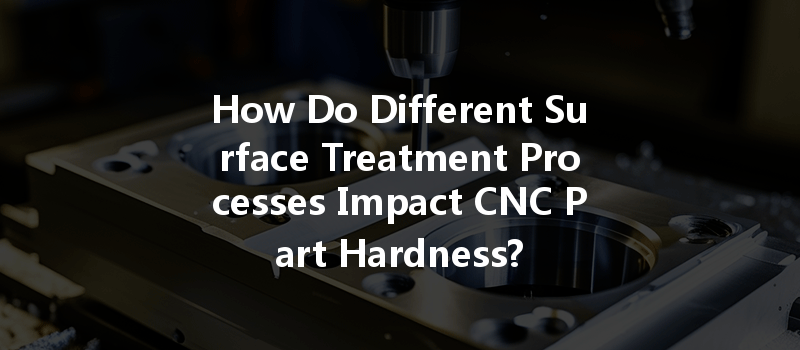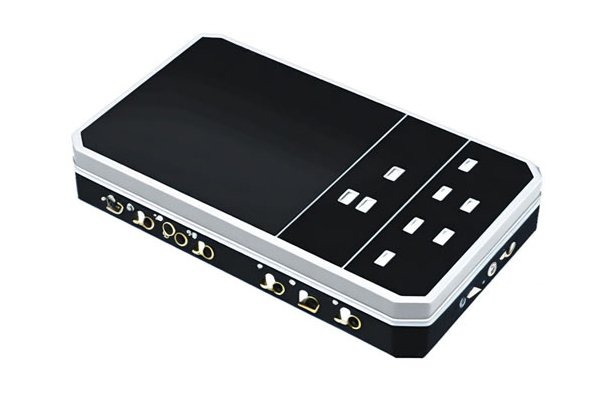: The Crucial Intersection of CNC Machining and Surface Treatment
In modern manufacturing, the art and science of creating machine components are nothing short of an intricate ballet. At the forefront of this dance is CNC (Computer Numerical Control) machining—a technological marvel that empowers manufacturers to produce high-precision parts with unparalleled efficiency. Yet, as any seasoned machinist at YL Machining can attest, the journey doesn’t end with machining alone. Once the parts are produced, they enter the realm of surface treatment, a critical stage that can significantly influence various attributes of the final product.
Among these attributes, hardness stands out as a key performance indicator. Hardness affects wear resistance, durability, and overall operational efficacy. But how do different surface treatment processes interact with the inherent properties of CNC-processed materials to alter hardness? This question sparks intrigue and necessitates a deep dive into the relationship between CNC machining and surface treatment processes. In this article, we will explore various surface treatment methods, analyze their effects on the hardness of CNC parts, and provide a comprehensive guide to make informed decisions for your next project.
Understanding Hardness and Its Importance
Before delving into the specifics of surface treatment processes, it’s essential to grasp the concept of hardness itself. Hardness is a material property that quantifies its resistance to deformation, particularly permanent deformation, indentation, or scratching. Engineers and manufacturers often refer to several standardized scales to measure hardness, including Rockwell, Vickers, and Brinell scales.
Why is Hardness Essential?
In summary, hardness is not merely a number but a critical dimension of operational integrity that shapes the lifespan and reliability of a component.
Overview of CNC Machining Processes
CNC machining encompasses various processes, including milling, turning, drilling, and grinding, which shape materials into precise geometries. Each process is characterized by different machining parameters like speed, feed rate, and cutting forces, which all affect the mechanical properties of the workpiece.
Material Considerations
Aluminum, stainless steel, titanium, and various alloys are common materials processed in CNC machining. Each has unique properties that respond differently to surface treatment processes. For example, aluminum is favored for its lightweight and corrosion-resistant properties, whereas stainless steel is often selected for its strength and temperature resistance. Understanding these characteristics lays the groundwork for effectively manipulating hardness through surface treatment.
Surface Treatment Processes: A Detailed Examination
A broad array of surface treatment processes exists, each with distinct mechanisms and impacts on hardness. Here, we will discuss several popular methods:
What is Anodizing?
Anodizing is an electrochemical process that converts the surface of a metal into a durable, corrosion-resistant oxide layer. Commonly used for aluminum components, anodizing enhances aesthetic appeal while providing practical benefits.
Impact on Hardness
Anodizing can significantly increase the surface hardness of aluminum parts. The resulting oxide layer can achieve a hardness level surpassing that of the base aluminum material, often reaching a depth of 25 to 70 microns. This increase in hardness makes anodized parts less susceptible to wear and scratches.
Case Study
Consider an aircraft component subjected to rigorous operational conditions. By utilizing anodizing, manufacturers can enhance hardness, ensuring that the component can withstand both environmental factors and mechanical stresses.
What is Hard Chrome Plating?
This process involves electroplating a layer of chromium onto a substrate to increase surface hardness, corrosion resistance, and wear resistance.
Impact on Hardness
Hard chrome plating can dramatically enhance surface hardness, often exceeding 1000 HV on the Vickers scale, depending on the thickness and process parameters. This treatment is especially beneficial for moving parts such as pistons and cylinder liners, where friction is a concern.
Real-World Application
Imagine hydraulic cylinders operating in extreme conditions. Hard chrome plating ensures that these components can endure friction and wear while maintaining operational efficiency over time.
What is Nitride Treatment?
Nitriding involves infusing nitrogen into the surface of a steel part to create a hard, wear-resistant layer. This thermochemical treatment is commonly used for gears, shafts, and other high-load components.
Impact on Hardness
The hardness of nitrided steel can reach up to 1200 HV, with a diffused layer providing superior wear resistance. The process also imparts advantageous fatigue strength, making components more durable.

Insights from Industry
For applications such as high-performance gears in automotive applications, nitriding can significantly extend service life by minimizing wear and maximizing load-bearing capacity.
What is Carburizing?
Carburizing is a heat treatment process that introduces carbon into the surface layer of low-carbon steels, followed by quenching to enhance hardness.
Impact on Hardness
Parts subjected to carburizing can achieve impressive surface hardness, often reaching 60 HRC, with increased toughness—a vital aspect for components exposed to shock loads.
Applications in the Field
In the case of roller bearings or drive shafts, carburized surfaces provide excellent wear characteristics while remaining resilient to impacts.
What are Surface Grinding and Polishing?
Surface grinding and polishing involve the mechanical removal of material through abrasive agents.
Impact on Hardness
While these methods primarily focus on dimensional accuracy and surface finish, they can influence hardness due to structural changes occurring at the surface level. They can also prepare components for subsequent surface treatment processes, enhancing overall hardness.
Significance in Manufacturing
Consider the manufacturing of precision tools; optimal grinding and finishing techniques can elevate hardness, leading to better performance in cutting applications.
Comparative Analysis of Surface Treatments
Now that we’ve explored various surface treatment processes, we should take a moment to compare their advantages and disadvantages concerning hardness enhancement.
| Surface Treatment | Increased Surface Hardness | Other Benefits | Limitations |
|————————-|—————————|————————————|———————————-|
| Anodizing | Moderate to High | Corrosion Resistance, Aesthetic | Limited to Non-ferrous Metals |
| Hard Chrome Plating | Very High | Corrosion Resistance, Lubricity | Thick coatings can lead to warping |
| Nitride Treatment | Very High | Fatigue Strength, Wear Resistance | Requires precise control in process |
| Carburizing | Very High | Excellent Toughness | Requires high temperatures |
| Surface Grinding/Polishing| Moderate | Improved Finish, Prepares for Coating | Less impact on hardness directly |
Recommendations for Selection
When selecting a surface treatment, consider the following factors:
The Future of CNC Machining and Surface Treatments
As technology advances, the landscape of CNC machining and surface treatments will inevitably transform. Innovations in nanotechnology, coatings, and automated surface treatments will introduce new possibilities for achieving superior hardness and performance standards. Innovations in Industry 4.0 are aimed at optimizing the interaction between CNC machining and surface treatment processes, enhancing quality control and traceability.
: The Importance of a Holistic Approach
In conclusion, the interplay between CNC machining and surface treatment processes is multifaceted and requires careful consideration. At YL Machining, we understand that the journey from design to finished component encompasses a spectrum of decisions that will define not only the product’s performance but also its longevity and reliability. By deeply considering the effects of various surface treatments on hardness, manufacturers can elevate their products to a new standard of excellence.
As we look to the future, let us embrace innovation, informed decision-making, and a commitment to quality that assures our customers satisfaction and confidence in CNC-machined components. By acknowledging the delicate balance between machining precision and surface treatment durability, we position ourselves at the frontier of manufacturing excellence.






